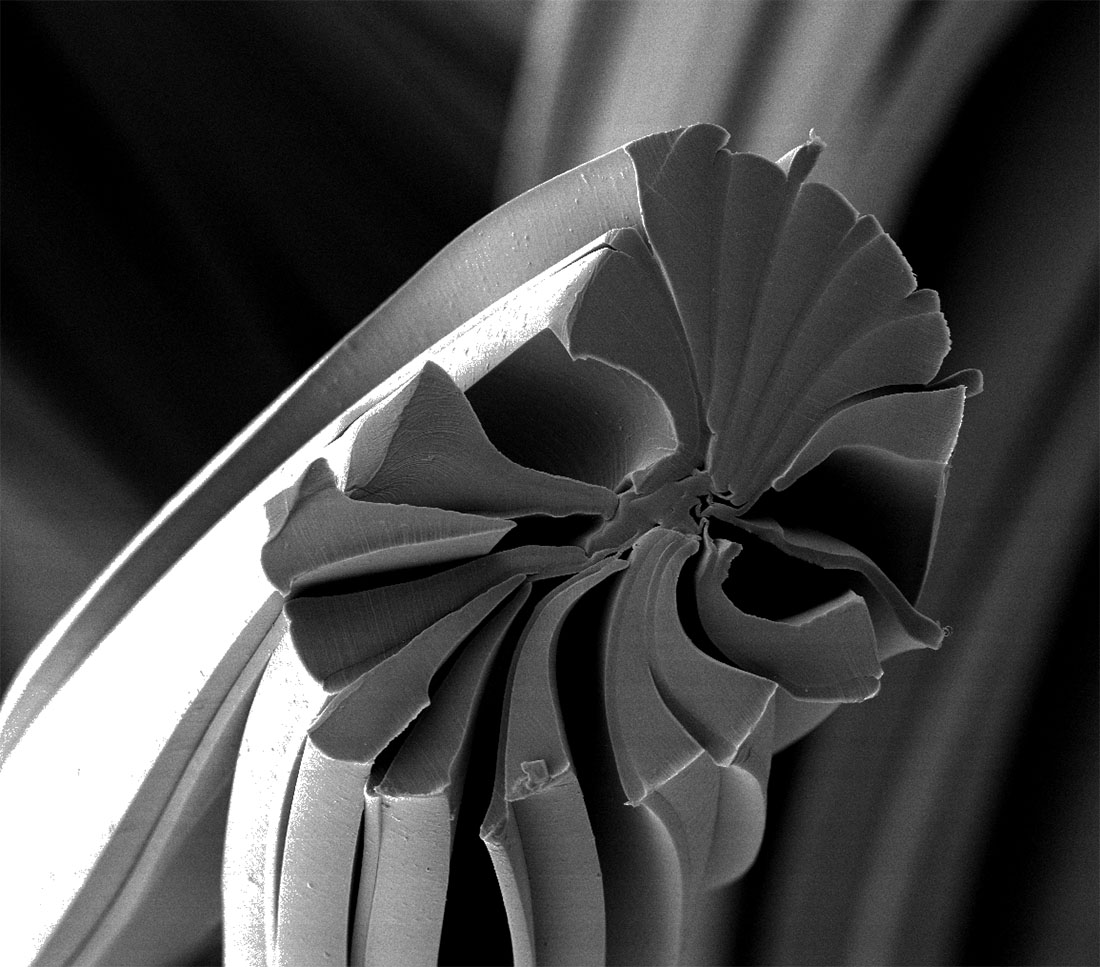A biocomponent fiber, or bico, is a fiber that combines two separate polymers into a single filament. The term conjugate fiber is also used as a synonym.
The process of making a bicomponent fiber is relatively straightforward. There are a number of patents that describe this practice. Commonly, the fiber is constructed of two component polymers divided into two or more distinct sections. Most of the time, the components demonstrate strong adhesion to one another, otherwise, the process would result in multiple fibers or different compositions.
What’s so great about bico fibers?
There are tremendous advantages to bicomponent fibers over homopolymers, and they are utilized throughout the nonwovens industry. These fibers are utilized for thermal bonding and can be tuned to a wide range of temperatures. Distinctive cross sections provide enhancements, including but not limited to: bulk, extremely fine fibers, high strength and surface area. Lastly, bico fibers can provide the “best of both worlds” as it relates to the polymer, such as high strength fiber cores with low cost easily meltable outer cores. The resultant can be a recyclable material if the fiber is made of the same base polymer with different molecular weights.
Bico variations
Basic variations of the bico fiber include core-sheath and side by side. Core and sheath are utilized as a bonding fiber, whereas the outer sheath melts at lower temperature than the core. Side-by-side fibers are utilized primarily to form self-crimping fibers to add bulk and can be utilized to make splittable fibers that yield finer fibers with distinct cross-sections.
More technically advanced bicomponent fiber structures include the segmented pie and islands in the sea. Segmented pie fibers are the basis for most microfiber products. They yield very fine fibers with high strength and high surface areas. Islands in the sea is a technique to make even finer fibers.
Recycling and reuse
Many bico fibers utilize the same basic polymer with different melt characteristics. This configuration makes it relatively simple to recover and recycle. Bico fibers that utilize different materials in combination significantly complicate the ability of recovery, and in particular, the suitability for mechanical recycling, which is the primary method of recycling plastics. This is the same challenge faced by flexible packing, as it is common to utilize multiple polymers to create packaging films.
Bico fibers that utilize different materials in combination significantly complicate the ability of recovery, and in particular, the suitability for mechanical recycling, which is the primary method of recycling plastics. This is the same challenge faced by flexible packing, as it is common to utilize multiple polymers to create packaging films.
There is no existing program anywhere in the world to provide public recovery of multipolymer materials. In general, there are several ways to recycle multipolymer fibers. The first option is to separate the different components and make them available for recycling in separated recycling streams. (This is a tall order, and perhaps one that is too logistically complicated to scale at this time.) The second option is to process the used fibers together in a compatibilization step. (Perhaps a bit more feasible than separating the components.) Lastly, there are promising technologies, including multiple formats of depolymerization, which return the polymer back to liquid state, or back to the original monomers, in a form that could be considered virgin. Ultimately, with all of the benefits bico fiber brings, particularly for nonwovens, we will see a solution to the recycling/end-of-life issue, and one of the aforementioned options, or a variation thereof, will likely play a role in this regard.
The future of bico fiber
Promising end of life technologies to address bico fibers include multiple formats of depolymerization, which return the polymer back to liquid state or back the original monomers in a form that could be considered virgin. New materials enter the market slowly, but there are advancements on the horizon. Biocomponents that utilize biorenewable materials that can be composted or chemically recycled are being developed. Compatibilizer technologies are also being developed to better facilitate utilization of dissimilar materials.
Bicomponent technologies have revolutionized many fiber applications. They have made products lighter, stronger and easier to work with. As an advanced material, this fiber type is expected to grow across many end use areas including: hygiene, textiles, automotive, home furnishings and many others to solve problems and meet customer demands.
As INDA’s director of education and technical affairs, Chris presents regular training related to nonwovens and filter media from INDA headquarters in Cary, NC. For more information about upcoming training opportunities, visit inda.org/education.


